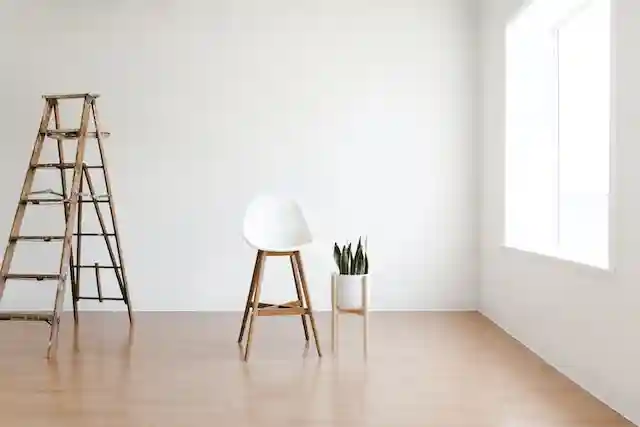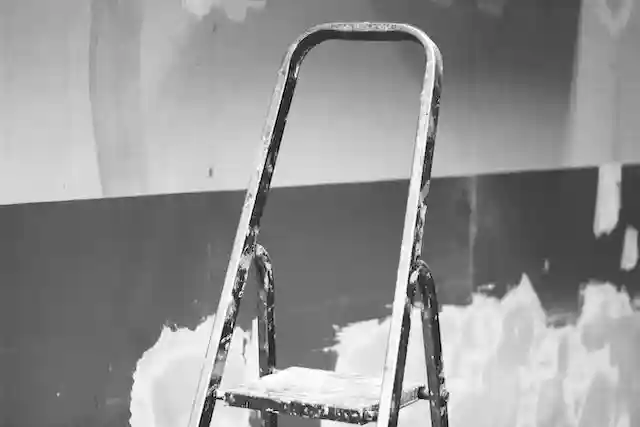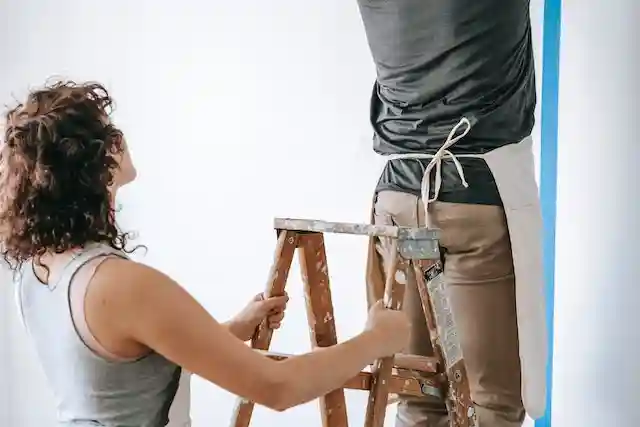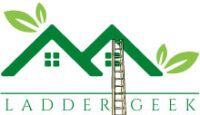Ladders have been around for a long time – 10,000 years to be exact. Whatever item survives for that long must be very useful. Ladders were made of wood in the past, and their design had only a few varieties. But, as does everything on this planet, the ladders evolve with time.
Now there are a lot of different kinds of them. The ladder has developed both in its design and materials. Nowadays, ladders are built from aluminum, fiberglass, and wood. In the following text, you will find eight different types of ladders you need to know to choose the right one for your needs.
- Step Ladder – a most common addition to every household tool shed
- An almost-step ladder – a twin-step ladder
- Platform Ladders are an improved model of step ladders
- Straight Ladders – the forefather of them all
- Extension ladders for reaching the bigger heights
- Flexible Ladders – a ladder that can save a life
- Multipurpose Ladder is a must-have for professional ladder use
- Final thought
Step Ladder – a most common addition to every household tool shed
Almost any household owns a step ladder. It consists of an A-frame with steps on one side, which can fold flat for easier storage. The height of step ladders differs, and sometimes it is possible to have them custom-made.
There are several reasons why these ladders are more convenient around the house than others. Firstly, they are easy to transport and store yet sufficiently high to be used for most projects. Secondly, their price is very affordable so everyone can find the ones suitable for their budget.
What is important to pay attention to when it comes to this type of ladder is how you use them. Their stability is pretty solid, but only when placed correctly. Make sure that all four legs are on the same level and that the ladder is fully unfolded.
The supporting struts located in the middle are also folded out flat. The person standing on them must position themselves in the middle section of the steps. Also, never climb so high that you cannot easily reach the ladder frame with your hands. When people use these ladders correctly, they are pretty safe and handy.
An almost-step ladder – a twin-step ladder
As opposed to its simpler cousin, twin-step ladders have steps on both sides of their A-frame. This makes them a bit more practical. However, they are not recommendable for amateurs. Working on heights of any kind must be done with utmost care and without performing acrobatics you are not used to.
The professionals using these ladders for years, on the other hand, have even developed a special way to move the ladders to the side while standing on them. Of course, that is something other people should avoid. As with all other types of ladders, utmost safety is crucial when using them.

Platform Ladders are an improved model of step ladders
Take a step ladder and add a platform to the top, and you’ll get a platform ladder. Well, this is one way to describe them. In reality, there is a wide variety of platform ladders ranging from the ones almost the same as step ladders plus the platform to those that resemble the tennis umpire chair.
The platform is a convenient addition. Depending on its design, one can use it for standing or putting tools on it. The more professional variety of the platform ladders even has a guarded platform, making them very handy and safe at bigger heights.
Many people find the regular-step-ladder-with-platform version the most suitable around the house. After all, the ladder is an essential item for most of the work. For example, they are among the tools that make moving easier.
The ones with the platform save you from going down now and then for the tools that you need. In today’s world, time is of the essence whatever you do, so this type of ladder is rightly popular.

Straight Ladders – the forefather of them all
Ask a child to draw you a ladder, and this is what you get – a straight ladder. As you are probably aware, we are talking about one-half of the step ladders – the half with the steps. Since they are not self-supporting, we can say they are not as stable as the previous types of ladders we mentioned. You should not use them indoors.
Nevertheless, the reason why they are among the types of ladders you need to know lies in the fact that you cannot do some outdoor work without them. Do your gutters need cleaning? You’ll need a straight ladder. Is the cat on the roof? Straight ladder, again.
As it has already been said, safety precautions are essential when handling any type of ladder. But when it comes to the straight ladders, taking care of safety is non-negotiable. Here are a few tips to always bear in mind when using straight ladders:
- Avoid standing on the three steps from the top down.
- Don’t lean over to one side of the ladder.
- If you carry something up the ladder, keep it within the vertical rails.
- Have someone hold the ladder steady for extra safety.

Unlike the other more renovation-oriented types of ladders you need to know about, the steps stool becomes necessary when you need to reach something high. We can call them the everyday ladders, especially popular with women and everyone who is not too tall.
They are a mini version of the platform ladders with only a few steps and a platform on top. Since they are that small and weigh very little, anyone can easily use them. They can easily find their place even in smaller homes, so they are widely popular.
There is a variety of steps stool that resembles part of the stairs. Kids love these as they are usually plastic, allowing them to reach the sink and wash their hands like all grown-ups. Also, you can find a model with a single step and a handle for the extra safety of your family members. All in all, they are a helpful addition to every tool collection.
Extension ladders for reaching the bigger heights
Their name implies it – the extension ladders are those that get an increase in height by extension. The reason extension ladders came into existence is the need to perform works at much bigger heights than what can be reached with regular ladders. After the workers finish the job, they fold the extension ladders and transport them without difficulty.
When it comes to safety, apart from all the regular advice that applies to all ladder types, one needs to be extra careful with the following:
- Ladder’s state. Before each usage, have a competent person inspect the ladder.
- The power lines. Your ladder and tools should be at least 10 feet away from them.
- The level of extension. Extend them to the minimum that allows you to reach the target height.
- The level where you are at. Never climb higher than the fourth step from the top of the extension ladder.
Speaking of safety, the experts from zippyshellcolumbus.com advise people to avoid using this type of ladder without professional supervision. Even though their usefulness is undeniable, the mistakes you might make when using them may result in fatal injuries.
Flexible Ladders – a ladder that can save a life
The story about various kinds of ladders would be incomplete without mentioning the flexible ladder. First of all, it is a ladder too. However, it’s a bit of an imposter among the ladders, as it’s rarely used for any work. Their frame is made of rope, steel cord, or some other flexible material, and the steps are the usual ones, same as on other types of ladders. People commonly use flexible ladders to climb off, on the helicopter, or for recreational purposes.
Multipurpose Ladder is a must-have for professional ladder use
Some of you might have never even heard of the multipurpose ladder, yet, every reputable tradesperson owns one. These ladders can be placed into a position to serve several purposes and typically have several articulations. I suggest you to read our article on 5 Ways Tradespeople Can Benefit from Telescopic Ladders.
Since they can serve as straight ladders, twin ladders, a scaffold, or work platforms, all kinds of workers use them. They are popular with painters, electricians, civil workers, and everyone who can use lightweight ladders with almost limitless potential.
But be careful – just like with the previous models, safety comes first. Avoid rushing when using a multipurpose (or any) ladder, as you might suffer some severe injuries.
Final thought
As you can see, there is no single perfect type of ladder. There is only the ideal type of ladder for a specific purpose. Regarding the eight types of ladders you need to know, one can also conclude that safety and appropriate usage are of utmost importance.
So, if ladders are not a tool you regularly use at work, research them before you use them. Never take the safety precautions for granted, even when it seems they are a bit of an exaggeration. That way, you will finish the job correctly, and you and your ladder will be safe and sound. And if you ask us, that should be the ultimate goal of every responsible worker.
Image credits – Photos by Bohdan K, Blue Bird, Paweł L on Pexels, and Andrew Neel on Unsplash
Joseph is the owner of LadderGeek. He is a home remodeling enthusiast. He has created this blog to share some of his knowledge on Ladder and accessories.



